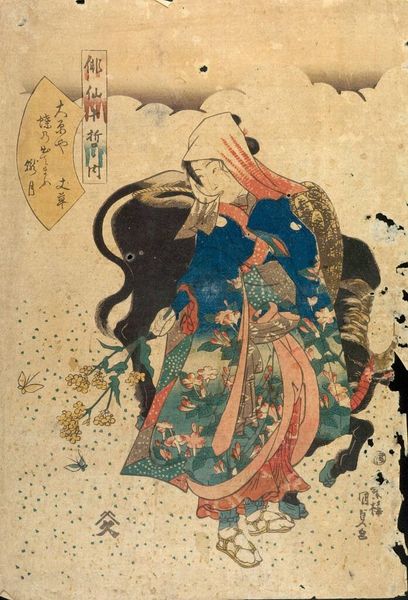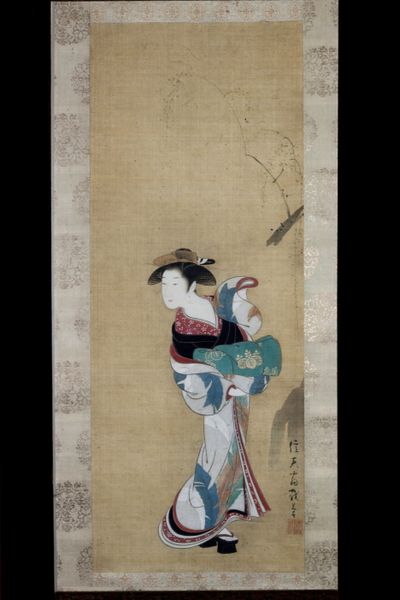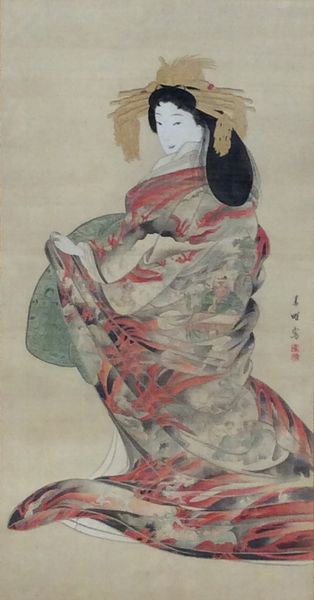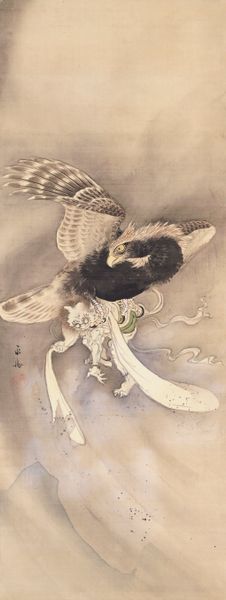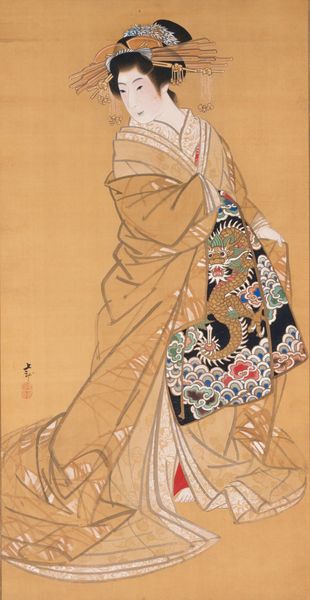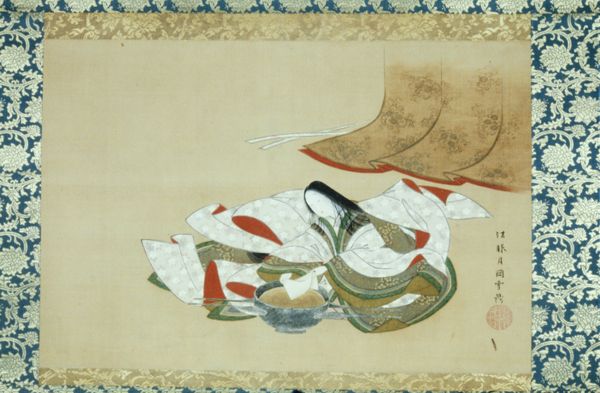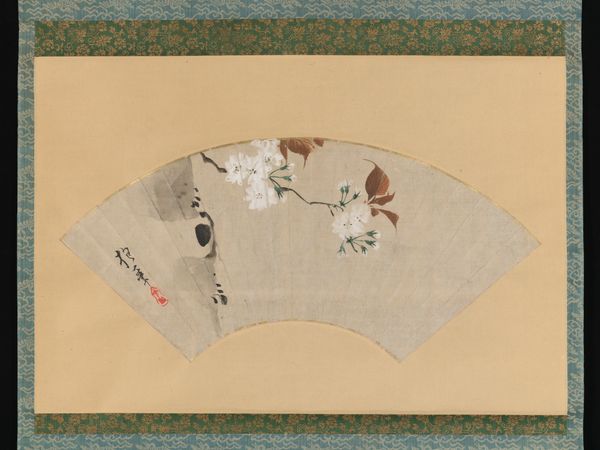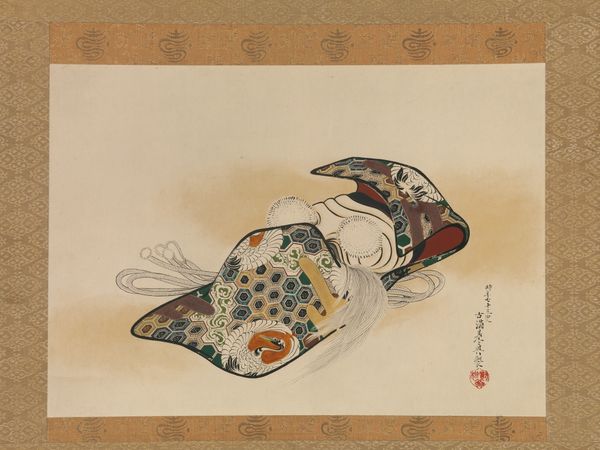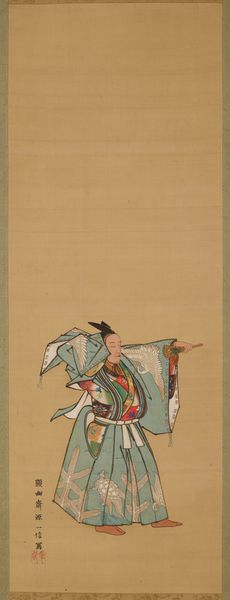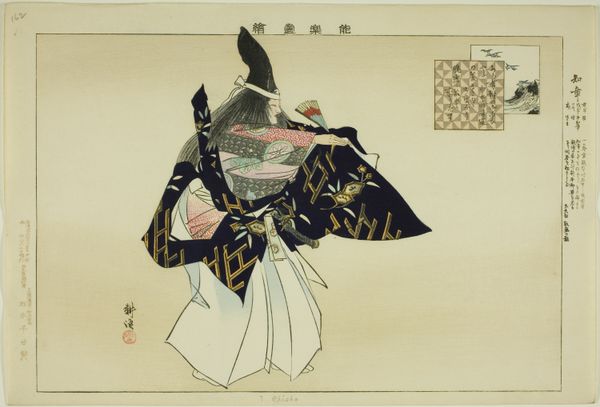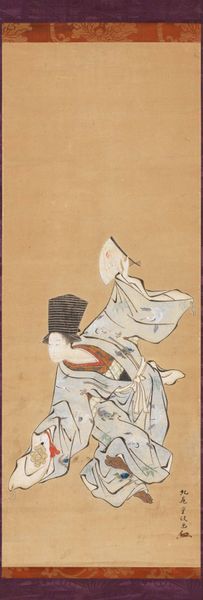![Ibaraki [right of a pair] by Shibata Zeshin](/_next/image?url=https%3A%2F%2Fd2w8kbdekdi1gv.cloudfront.net%2FeyJidWNrZXQiOiAiYXJ0ZXJhLWltYWdlcy1idWNrZXQiLCAia2V5IjogImFydHdvcmtzLzIyYzVjYmRkLTJjZjctNDYzNC04YWMxLTVmOGVhMzg2ZTcxNi8yMmM1Y2JkZC0yY2Y3LTQ2MzQtOGFjMS01ZjhlYTM4NmU3MTZfZnVsbC5qcGciLCAiZWRpdHMiOiB7InJlc2l6ZSI6IHsid2lkdGgiOiAxOTIwLCAiaGVpZ2h0IjogMTkyMCwgImZpdCI6ICJpbnNpZGUifX19&w=3840&q=75)
painting, watercolor
#
water colours
#
narrative-art
#
painting
#
asian-art
#
japan
#
figuration
#
watercolor
#
watercolour illustration
#
watercolor
Dimensions: 65 3/8 × 66 11/16 in. (166.05 × 169.39 cm) (image)67 × 68 × 3/4 in. (170.18 × 172.72 × 1.91 cm)
Copyright: Public Domain
This striking image of Ibaraki, the demon, is part of a pair of paintings by Shibata Zeshin, likely created in the late 19th century, a time of significant social and cultural change in Japan as it opened up to the West. Zeshin, who lived through this transition, was known for revitalizing traditional Japanese art forms, blending them with new influences. Here, Ibaraki is depicted with wild hair, sharp claws, and a fierce expression, embodying untamed power. Yet, the demon’s clothing hints at a complex identity – a mix of brutality and cultural refinement. Historically, demons in Japanese folklore often represent the fears and anxieties of society, acting as scapegoats for human failings. Zeshin’s portrayal invites us to consider the demon not just as a monster, but as a figure embodying the tensions between tradition and modernity, control and chaos. How does this image make you feel about the boundaries between the human and the monstrous?
Comments
minneapolisinstituteofart over 1 year ago
⋮
Ibaraki-dōji was a demon who became a follower of Shuten-dōji, the leader of a gang of demons terrorizing Kyoto in the 10th century. Ibaraki was able to escape when the other demons were destroyed and he went on to Rashōmon gate. There, he encountered the warrior Watanabe no Tsuna who cut one of his arms off. Appearing as an old woman, Ibaraki is granted access to see the arm that is kept in a purified box. He manages to steal his arm and, reverting back into a demon, disappears into the sky. Shibata Zeshin was all and foremost a lacquer artist but created also striking paintings and the Ibaraki demon was one of his favorite subjects. Several versions in screen and scroll format exist as well as wood plaques dedicated to specific shrines and temples.
Join the conversation
Join millions of artists and users on Artera today and experience the ultimate creative platform.
